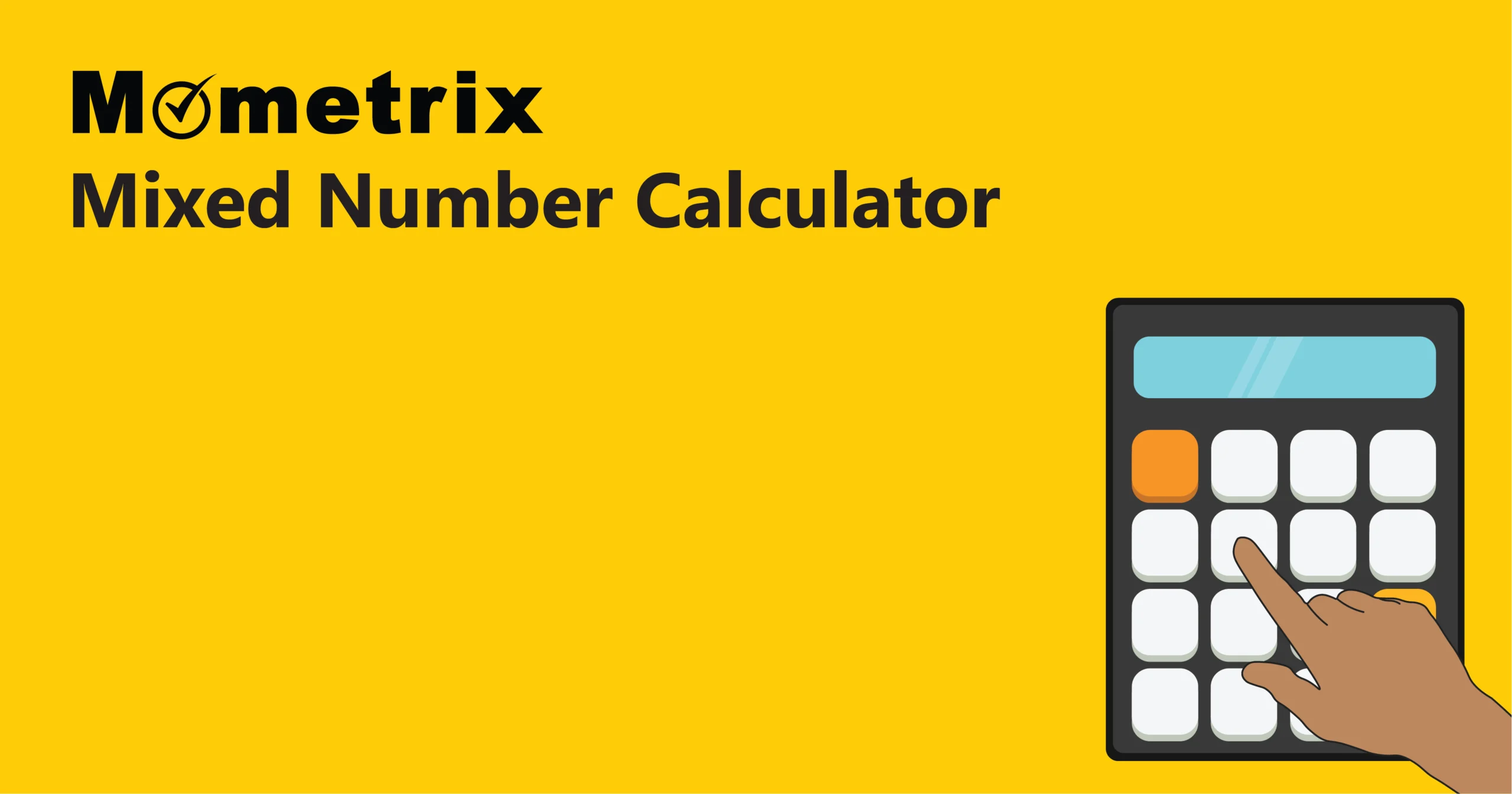Use this calculator to help you quickly add, subtract, multiply, or divide mixed numbers fractions.
Knowing how to add, subtract, multiply, and divide mixed numbers is an important math concept to understand!
Take a look at these examples to see how each operation is performed:
Adding Mixed Numbers
The key to adding mixed numbers is to add the whole numbers and the fractions separately.
Example 1
Let’s start by adding the whole numbers:
To add the fractions together, all we have to do is add the numerators since they are the same for both fractions:
We can simplify \(\frac{6}{8}\) to be \(\frac{3}{4}\).
Then, all we have to do is put together our final whole number and fraction, which gives us the answer \(5 \frac{3}{4}\)!
Example 2
Same as the first example, let’s start by adding the whole numbers:
Since the fractions have different denominators, we need to find a common denominator. The least common denominator (LCD) for 3 and 2 is 6.
Now we can add the new fractions:
Notice that \(\frac{7}{6}\) is an improper fraction, meaning the numerator is larger than the denominator. Let’s convert it to a mixed number:
Then, we just need to add this result to the whole number we calculated earlier:
Subtracting Mixed Numbers
When subtracting mixed numbers, you may need to borrow from the whole number if the first fraction is smaller than the second.
Example 1
First, we need to find a common denominator for the fractions. The LCD of 4 and 8 is 8.
Now we can rewrite the problem as \(5\frac{6}{8}\: -\: 2 \frac{1}{8}\).
To solve, let’s subtract the whole numbers first, then the fractions:
Combine the results to get the final answer: \(3 \frac{5}{8}\)!
Example 2
Notice that \(\frac{1}{4}\) is smaller than \(\frac{3}{4}\). We can’t subtract a larger fraction from a smaller one, so we need to borrow from the 6.
Let’s take 1 from the 6 (which turns the 6 into a 5) and turn that 1 into a fraction with a denominator of 4, which would be \(\frac{4}{4}\).
Now we can add \(\frac{4}{4}\) to the fraction we already have:
We’ve turned our first mixed number from \(6\frac{1}{4}\) to \(5\frac{5}{4}\), so our full problem now reads as follows:
To solve, let’s subtract the whole numbers first, then the fractions:
We can simplify \(\frac{2}{4}\) to \(\frac{1}{2}\).
Combine the results to get the final answer: \(3 \frac{1}{2}\)!
Multiplying Mixed Numbers
When multiplying mixed numbers, you need to convert them into improper fractions first.
Example 1
First, we need to convert both mixed numbers to improper fractions:
Now we can multiply these two improper fractions:
Because 21 and 6 are both divisible by 3, we can simplify \(\frac{21}{6}\) to \(\frac{7}{2}\).
Finally, we can convert the improper fraction back into a mixed number:
Example 2
Again, we need to start by converting both mixed numbers to improper fractions:
Now we can multiply these two improper fractions. Before we do, let’s simplify a bit:
Now we can multiply the simplified numbers:
This give us the final answer of 15!
Dividing Mixed Numbers
When dividing mixed numbers, you need to convert them into improper fractions first.
Example 1
First, convert both mixed numbers to improper fractions:
Next, invert the second fraction and multiply:
Then, we multiply the numerators and denominators:
Since 28 and 10 are both divisible by 2, we can simplify \(\frac{28}{10}\) to \(\frac{14}{5}\).
Finally, convert back to a mixed number:
Example 2
Again, we need to start by converting both mixed numbers to improper fractions:
Now we need to invert and multiply:
You can simplify before multiplying. The 3s cancel each other out, and 16 is divisible by 8.
This give us the final answer of 2!
More Resources
Click below to watch a comprehensive video about adding, subtracting, multiplying, and dividing mixed numbers, along with other helpful resources to help you fully grasp the topic!
